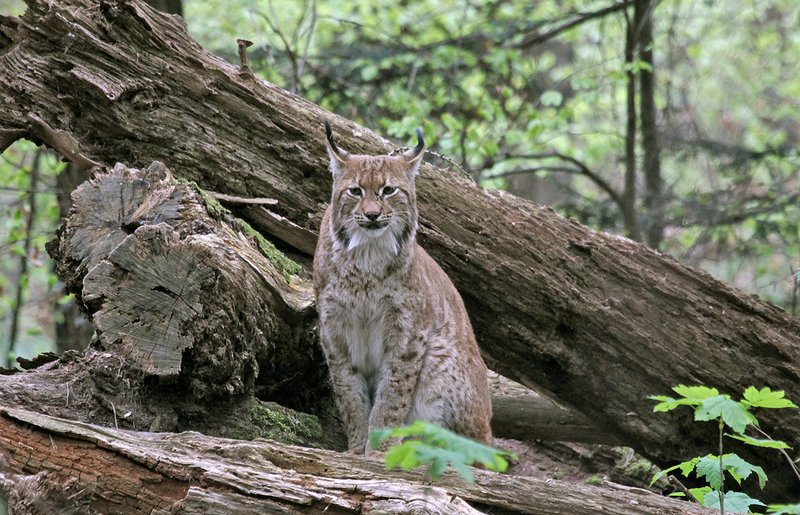A fundamental reason for the lack of acceptance of predators in Switzerland may be in the perception, primarily of the wolf, in mythology. For this reason, within the empirical studies of the WSL project called "Raubtierakzeptanz", this aspect was investigated and the roles of the fox, the lynx and the wolf in mythology were the first subjects to be evaluated. A study of literature provided some indications.
The fox
In Europe, the fox is mainly known from fables and animal tales: It is described as being smart (the German saying "schlau wie ein Fuchs" ("clever as a fox") refers to this), devious, greedy and two-faced. On one hand, the fox saves its own skin with slyness, while on the other hand its trickiness helps it to take advantage of others. Often, other animals resist the fox and he himself becomes the loser in the end. If the fox can not reach its goal then making up convenient excuses becomes a way out: for example, if the fox can not reach the grapes that are hanging too high up for him then he calls them too sour.
In mythology, the fox plays many different roles as described in the following:
- Symbol of fertility: In Central Europe, for all of the important holidays (Easter, Pentecost, Midsummer Night and Christmas) sacrifices were made to the fox. In addition, in ancient Greece the fox was a symbol of fertility as well: As an example, Dionysus, the Greek god of fertility and ecstasy, appeared dressed in a fox fur.
- Demon of weather: In context to the weather the fox is often referred to; in Silesia it is said, "the fox is brewing" when a thunderstorm is building and the Finns refer to the northern lights as "the fire of the fox".
- Diabolic creature: During early Christian times the fox, as well as other animals which belonged to the old gods were demonized. A sacrifice to the God of fertility suddenly became interpreted as a punishment for the fox, which represented the evil creature. Due to its blazing red color the fox became the symbol for the devil: This is most likely where the expression "fuchsteufelswild" (engl. hopping mad) originates from. Another explanation for this saying is the fact that the fox can transmit the canine madness.
The lynx
The lynx appears in mythology very rarely. There are only very few sayings in German which refer to its traits. To coax something from somebody (German "abluchsen") calls to mind the fact that the lynx is a speedy hunter. "Paying attention like a lynx" refers to the idea that lynxes have very good sight.
The wolf
Many people are familiar with the big, bad wolf from fairy tales such as "Little Red Riding Hood" or "The Wolf and the Seven Little Goats". Countless times, the wolf is referred to as being wild, tearing, snappish, grim and sanguinary. Grimm (1887) even describes him as being the most evil creature of all animals
While examining the role of the wolf in mythology in more detail, it turns out that the wolf, like the fox, plays many different roles:
Demonic and devilish
In the Edda, the ancient Icelandic sagas, the wolf was a symbol for demonic powers: Odin, the God of war and death was accompanied by two wolves, and the mythical wolf, Fenrir, played an important role during the apocalypse.
In Indian mythology, the wolf is described as demonic. Furthermore, the wolf is portrayed as thievish, deceptive and false. In India, the demons were named after the wolf. In Christianity the wolf was even equated with the devil: Jesus Christ advised against false prophets dressed in sheep’s clothing which in fact were wolfs. Numerous myths from Eastern Europe, Russia and Scandinavia tell about the creation of the wolf by the devil. During the creation of the wolf, the devil relied on the help of God and it was God’s will that the wolf kills sheep and goats.
Transformed
During the Middle Ages, the belief was widely accepted that men would transform into werewolves. The werewolf, a creature from the devil, obsessed, half human and half animal, roamed the streets at night and, "drank the still warm blood, gorged the bowels from its innocent victims during orgies of satanic cruelty". The belief in werewolves already existed in the ancient world, but during the Middle Ages this belief grew to be much stronger. Mostly women and children became victims of werewolves which, in reality were men that felt and acted like wolves while under the influence of drugs and rituals. It was believed that with the help of the Malleus Maleficarum (the hammer of the witches) in 1489, one could not only recognize witches but also werewolves, which resulted in countless men being burned to death on bonfires as so-called werewolves. To contemporaries it was clear that one would turn into a werewolf through an evil spell or as a punishment for a serious sin.
Outlawed
The word wolf is widely common in the Indo-European roots of language and often not only stands for the animal but describes in the old Germanic languages the bandit, murderer, slayer, defied criminal, the banned and the evil ghost. In particular, the Old High German word "warg" was equated with evil itself. Outlaws were called "wolves" and the verdict "thou art a warg" declared the condemned as officially excluded, and forced to live in the wilderness. It was said to be forbidden to provide the "warg" with food and shelter. Even a condemned man’s own wife was not allowed to care for him, otherwise she herself would be condemned as a "warg" (Grimm 1887).
Worshipped
Many different cultures worshipped the wolf. For the Egyptians the wolf symbolized the god of the empire of the dead. The Mongols saw in the wolf their first ancestor and for the Romans the wolf was the symbol for Mars, the God of war. The combination of the wolf with war was not meant to be negative but, instead, correlated it to the glorious death of a warrior or emperor. Furthermore, the fighting heroes were compared with furious wolves.
Examples of wolf worshipping can be found in the combination of proper names with the word wolf attached: Wolfgang, Wolfdietrich, Wolfram, Wolfhart. The wolf is also worshipped as the protector of human beings. The most famous myth may be the one of Romulus and Remus, the founders of the city of Rome, who were abandoned as small children. A wolf found them and raised them as her own cubs. The Luperkaliefest (celebration in honor of fertility) is celebrating this myth, during which the female wolf is worshipped each year as the symbol for motherly sacrifice and fertility. The "Jungle book" has a similar theme as the main character, "Mowgli", is raised by wolves.
Conclusion
The literature review of mythological meanings of predators has clarified that the animals investigated here play very different roles, with negative as well as positive attributes. Empirical studies revealed which roles are, according to the public, the most relevant ones . An appropriate approach to public relations may be to not drive out a negative image, such as the one with the big, bad wolf in Little Red Riding Hood, but instead to remind the public of the various roles the predators can play, in particular the positive ones.



